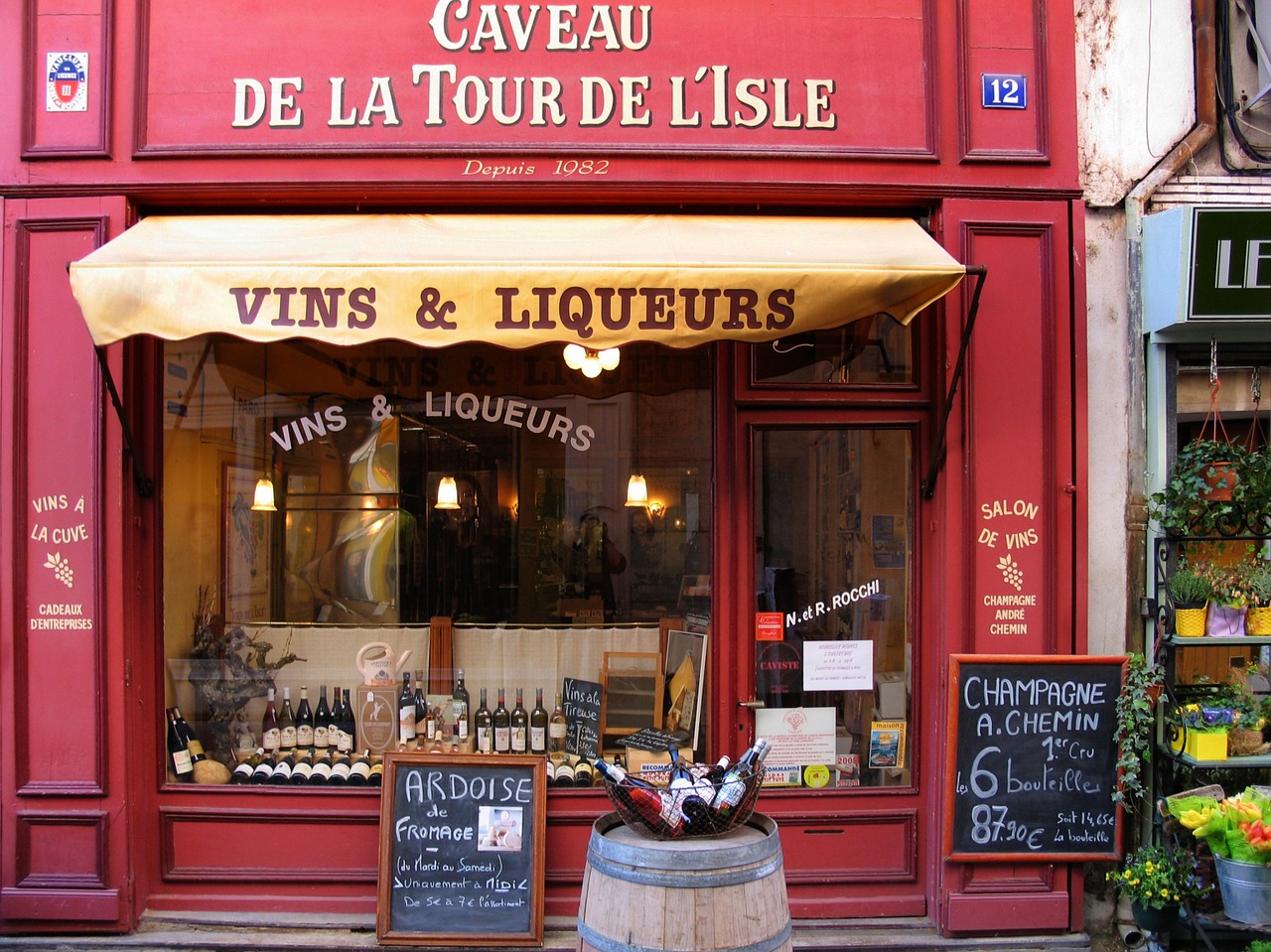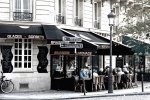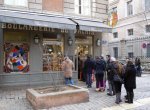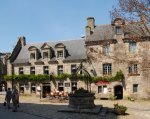french liqueurs
French liqueurs make wonderful cocktails. But what are liqueurs and how do we distinguish them from a spirit?
The difference is in the way the flavours are obtained. In other words, a liqueur is any spirit based drink with flavourings added. An example here would be to understand that Kirsch is a spirit as it is obtained from the distillation of the cherries whereas the liqueur cherry brandy is a spirit from other sources to which cherry flavour has been added by infusion of the fruit.
Liqueurs also have their origins in their making with aromatic ingredients such as herbs, fruit extracts, seeds, spices, nuts and flowers. Often they were used for their medicinal properties.
Here are some examples of French liqueurs you may like to sample!

14 popular French liqueurs
Anis
Anis is made in France and also in Spain. It is very much like Pastis as it is flavoured with aniseed. The French liqueur 'Anise' is mainly dry.
You serve it in a thick bottomed tumbler with a small amount of water and it will turn milky with a slightly green tinge. It is a great appetite enhancer!
Anisette
This is a French liqueur which is sweeter and stronger than Anise. One of the most famous brands is Marie Brizard.
Benedictine
This liqueur was first made by Benedictine monks in Fécamp in Normandy. It is a cognac based herbal liqueur and was produced until the French Revolution in 1789.
It was later revived by Alexandre Le Grand, a descendant of the monastry's lawyers. He found the secret recipe and built a new distillery at Fécamp.
It is thought to contain as many as 75 aromatic ingredients.
It is best served straight in a large liqueur glass at the end of your meal however, it can be mixed if you find it too much to take in it's natural form!
Chambord
A beautiful black raspberry liqueur said to have been introduced by Louis X1V on his visit to the Château de Chambord in the Loire Valley area of France.
It is made from both red and black raspberries, Madagascar vanilla, honey and cognac and Moroccan citrus peel.
Cocktails made from Chambord include Raspberry Margarita, French Manhattan and many others.
Chartreuse
Here is one of the French liqueurs which was made by the Carthusian Monks since the 1700's. It is named after the Monks' Grande Chartreuse monastery in the Grenoble region in France. The liqueur is produced in a factory in Voiron nearby.
The Green Chartreuse is very intense and powerful with aromatic flavours. Whilst the Yellow Chartreuse is sweeter and has a normal spirit strength.
If you find Chartreuse a little strong, do what the French do and serve it mixed as a long drink either with a tonic or soda and lots of ice.
The French also add a splash of the Green Chartreuse to their hot chocolate and the yellow to their coffee.
Cointreau
This is undoubtedly the most famous of French liqueurs of all and is a brandy based spirit flavoured with bitter oranges. It was launched in 1849 by the Cointreau brothers, Edouard and Adolphe.
The liqueur is made in the Loire valley in Angiers. It has a variety of different strengths including a cream version but the very best Cointrea comes in a dark brown square bottle at 40%ABV.
You can serve your Cointreur on the rocks or frappé with ice or crystals and in many cocktails. It can also be added to some recipes such as orange sauce served with duck or desserts such as a rich chocolate mousse.
Crème Liqueurs
The term crème was originally used to make a distinction from the dry spirits such as cognac or calvados. They are mainly French in origin, the Marie Bizzard company in Bordeaux is still famous in this field.
They are used in making cocktails and are usually recommended for making your own cocktails at home. Most popular ones are crème de banane which is banana, cacao which is chocolate or cocoa and is available in both dark and white (just for you to know if you are a chocoholic!), cassis which is blackcurrant, fraise which is strawberry, framboise which is raspberry and menthe which is mint.
They are best served at the end of your dinner, preferably frappé which means to pour them over shaved ice rather than having them neat.
Grand Marnier
Produced in two centres, Château de Bourg in the Cognac region of France and at Neauphle-le-Château near Paris. It is a French liqueur made with the juice of Caribbean oranges and blended with cognac.
It is excellent in classic recipes such as duck à l' orange and a great varieties of wonderful French desserts such as flamed crêpes and chocolate recipes.
Parfait Amou
This is Dutch in origin yet it's name is surely French - probably as it is to do with romance and seduction - meaning 'perfect love'.
Flavoured with lemons or citrus fruits such as cloves, cinnamon, coriander seeds and violets.
It is made by both the Dutch and the French and served either as it is or blended with something such as lemonade in order not to spoil the violet colour.
Pastis
Pastis is what can be described as an in between times drink as well as just an aperitif.
When added to water it clouds up and this is what gives Pastis it's name - the old southern French term meaning muddled or hazy.
It has the flavour of aniseed which is said to have been an aid for digestion since the time of the Egyptians.
It should be served in a small thick bottomed glass with about the same amount of very cold water. If you find it too strong, you can sweeten it by balancing a perforated spoon or tea-strainer with a sugar cube on it across the top of the glass and then pour the water over it.
Poire William
This is a delicate French pear liqueur but should not be confused with true pear brandy which is made in the Alsace area of France. One of the best brands of pear flavoured liqueurs is made by Marie Blizzard.
It is best served chilled or with a single piece of ice as a good aperitif or alternatively you can add some lemonade.
Trappistine
This is another French liqueur made at the convent of the Abbaye de Grâce de Dieu in the eastern department of France in Doubs near the Swiss border.
It is like armagnac and contains many wild herbs.
La Vielle Cure
Sometimes known as 'The Old Cure' or 'The Old Rectory' and was used as a medicinal alcohol remedy. It is flavoured with at least 50 different wild herbs.
Verveine
Verveine du Vélay is rather like Chartreuse in that it comes in green and yellow and is a brandy based herbal flavoured liqueur from Puy in the Auvergne region of France.
The name Verveine comes from the flowering plant Verbena and this plant has been used for its folk medicine for centuries. It is said to be a restorative for the liver as well as neurological complaints.
French Liqueurs
related articles
Recent Articles
-
French Food and Drink - No BS Guide for lovers of Food, Wine, Liqueurs
Aug 28, 19 03:18 AM
Our guide to French food and drink for those who love traditional French food along with our no BS guide to understanding French wine and liqueurs
-
Things To Do In Carcassonne The Ultimate Tourist Guide
Aug 24, 19 06:26 PM
The ultimate tourist guide to things to do in Carcassonne when you visit this wonderful town in Aude France. Discover the places to go and see in Carcassone.
-
Lyon Old Town Guide to Vieux Lyon
Aug 18, 19 07:48 AM
Your complete guide to Lyon old town otherwise known as the Vieux Lyon. Don't miss this amazing part of the city if you're visiting Lyon in France.
-
18 French Villages You Must Visit Most Beautiful Villages in France
Aug 17, 19 06:31 AM
Our guide to the 18 most beautiful French villages you simply must visit. Loads of info, photos and facts in our ultimate villages in France tourist guide
-
What a Pissoir - The True Story of France's Unique Urinals
Aug 13, 19 03:47 PM
Is there anything more French than a pissoir? Sadly on the decline nevertheless the pissor is an endring image of the country. This is their story





